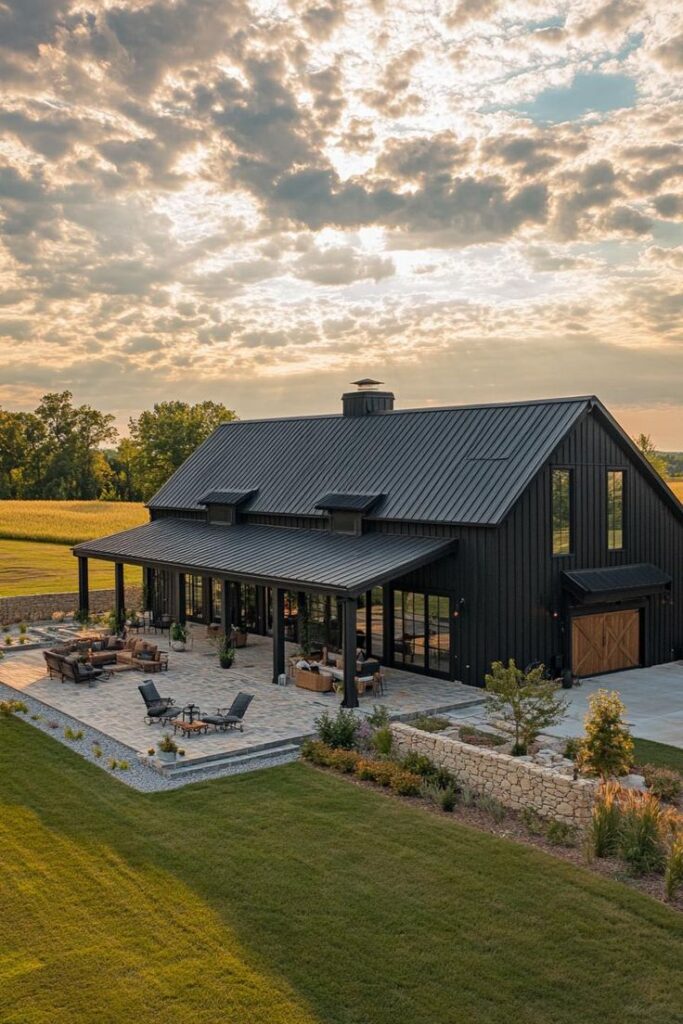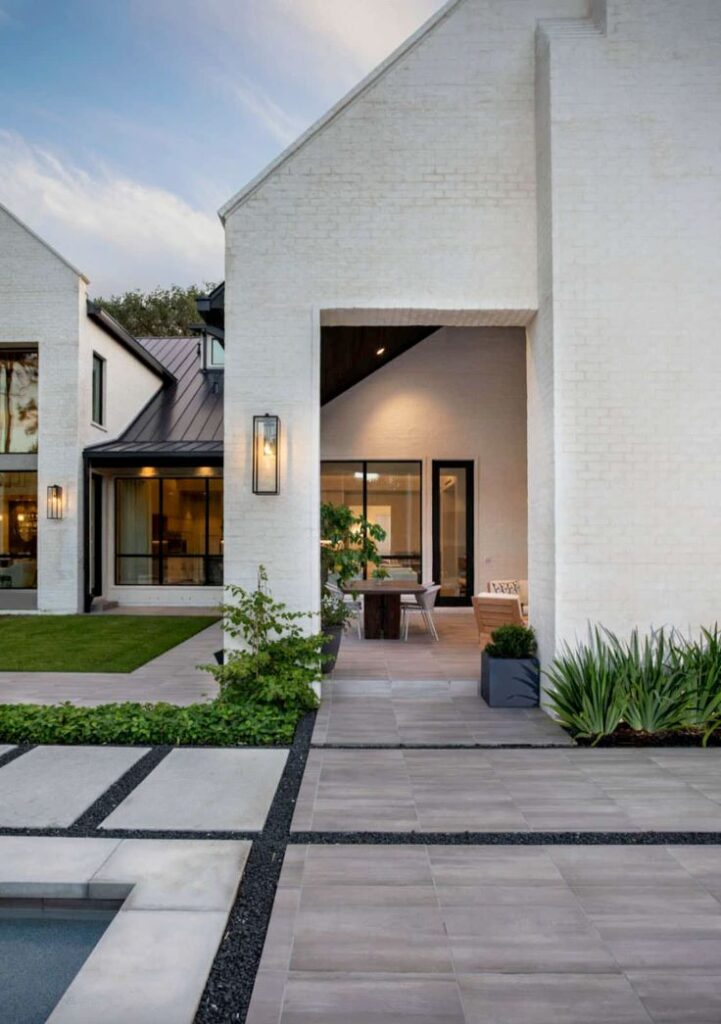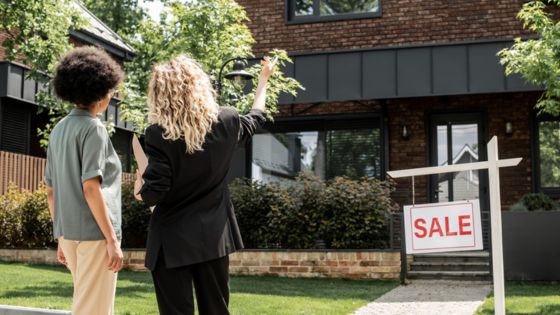
Selling a home in St. Louis requires understanding both its architectural charm and current market dynamics. The city has a wide variety of architectural types, from antique row houses to modern suburban residences.
Buyers are increasingly attracted to houses that combine St. Louis’ classic charm with modern amenities. Simultaneously, the local real estate market brings both distinct possibilities and disadvantages.
Knowing the latest trends in both architecture and market conditions will help sellers achieve success in this competitive landscape. Here are some key insights for selling homes in St. Louis.
Historic Charm and Character of St. Louis Homes
St. Louis is rich in historic homes, especially in neighborhoods like Lafayette Square and Soulard. These homes often feature brick facades, wrought-iron fences, and unique detailing that attracts buyers looking for charm.
Ladue News notes that the Art Deco style is a prominent architectural feature in buildings around St. Louis. One standout residential building is the DeBaliviere Building, completed in 1928.
Located at Delmar Boulevard and DeBaliviere Avenue, the building features a two-toned black and orange brick façade. Designed by St. Louis-born architect Isadore Shank, the DeBaliviere Building showcases his unique style.
Many historic homes have been renovated, blending old-world aesthetics with modern amenities. Sellers should highlight the original features of their homes, such as stained glass windows or hardwood floors.
Additionally, buyers in St. Louis value the stories behind these homes. It’s important to share the history of the property to appeal to those who love vintage design.
Modernizing Historic Homes for the Market


While historic homes are a strong selling point, modern buyers expect updated features and energy efficiency. Renovations that respect the building’s original design but add modern touches are highly valued.
Architectural Digest states that the size of the space greatly influences renovation costs when remodeling a home. On average, whole house renovations range from $10 to $250 per square foot. Specific rooms, like kitchens and bathrooms, typically cost between $100 and $275 per square foot.
St. Louis buyers are drawn to homes that blend traditional charm with modern upgrades. Sellers should focus on making the following key improvements to maximize their home’s appeal:
- Kitchens and bathrooms: Focus on renovations, as they often offer a higher return on investment.
- Energy-efficient windows: Appeal to buyers looking for long-term savings and eco-friendly features.
- Modern appliances: Incorporate updated, energy-efficient appliances to meet contemporary standards.
- Open-concept layouts: Create a more expansive and welcoming environment that appeals to today’s customers.
Sellers should keep the property’s historical integrity in mind when making these improvements.
The Influence of St. Louis Neighborhoods on Home Value
St. Louis has diverse neighborhoods, each with its own appeal. Areas like Benton Heights and Bevo Mill are known for their suburban charm and family-friendly environments. In contrast, neighborhoods like the Central West End and Compton Heights boast urban conveniences and walkability.
Redfin mentions that Benton Park offers a mix of 1800s homes and modern townhouses with a median sale price of $335,000. Bevo Mill features historic German architecture and charming bungalows, with a median sale price of $175,000. Central West End showcases high-rise apartments, with a median sale price of $355,000.
Understanding the architectural style that defines each neighborhood is important for setting expectations. Buyers are often attracted to the vibe of specific neighborhoods, whether it’s modern or historic. Sellers should emphasize how their home fits within the neighborhood’s overall aesthetic and appeal to potential buyers.
The Growing Demand for St. Louis Real Estate
The St. Louis real estate market has seen steady growth in recent years. The demand for homes remains strong in both the city and suburbs. Interest rates and affordability are key factors that influence buyer decisions in St. Louis. Compared to other large cities, St. Louis has a cheaper home market for buyers.
However, market circumstances might differ substantially by area, making it critical to understand local dynamics. Sellers seeking a quick sale might explore negotiating with cash buyers in St. Louis.
Selling a property for cash expedites the process, eliminating financing delays and complexities. Cash buyers provide speedy closings, making them an ideal choice for homeowners who need to sell their houses quickly.
Some businesses specialize in buying houses directly from sellers, skipping the typical real estate procedure and listings. They provide cash offers, eliminating the lengthy wait for bank approvals and the hassle of negotiations. For a fast and reliable sale, consider Doctor Home, reliable cash home buyers in St. Louis. Sellers can receive competitive offers and close on their homes within a few days, often without delays.
The Role of Inventory in St. Louis’ Market
Low housing inventory has been a key factor affecting the St. Louis real estate market. When supply is limited, competition increases, and homes can sell quickly, often above the asking price.
Steadily highlights that inventory levels in St. Louis remain low, making the housing market increasingly competitive. In January 2024, 275 homes were sold, a slight decrease from 279 homes the previous year. While new listings continue to appear, low inventory levels still create challenges for homebuyers seeking affordability.
Sellers in St. Louis should be prepared for potential bidding wars. Homes priced competitively and located in popular communities are more likely to garner interest.
However, inventory levels change, so sellers must be informed about market circumstances. Timing the selling of a house when inventory is limited might result in faster sales and greater offers.
Pricing Strategies in St. Louis’ Competitive Market
Pricing a home correctly is crucial in the competitive St. Louis market. Overpricing a home can lead to it sitting on the market longer while underpricing can leave money on the table.
Sellers should perform market research to identify appropriate pricing based on recent sales in their area. Working with a local real estate agent who understands St. Louis is essential.
A competent agent may assist sellers in determining the appropriate price to attract bidders and complete the transaction. Pricing a house correctly might be the difference between a speedy sale and an extended listing.
FAQs
What are the challenges of selling a historic home?
Selling historic homes presents challenges, such as maintaining original features while upgrading systems for modern buyers. Renovations may require approval or adherence to historical preservation guidelines. Additionally, prospective buyers may be concerned with the costs of ongoing maintenance, despite the appeal of owning a piece of history.
How do renovations improve buyer interest in older homes?
Renovations that modernize older homes make them more livable and appealing to potential buyers. Kitchens and bathrooms, often the heart of the home, are especially important for buyers. Homes with contemporary features like upgraded wiring and energy-efficient systems show that the property is move-in ready, increasing buyer confidence.
Do property taxes vary by neighborhood in St. Louis?
Property taxes can vary significantly between St. Louis neighborhoods, affecting overall affordability. Areas with higher tax rates may have less demand from price-sensitive buyers. Sellers should consider local tax rates when pricing their homes, as they can influence both buyer interest and final sale prices.
How does the job market influence the housing market?
The local job market in St. Louis influences housing demand, especially for families and professionals. A thriving economy with growing industries, such as healthcare and tech, attracts new residents. More job opportunities increase the demand for housing, particularly in neighborhoods near business districts and employment hubs.
How do bidding wars affect St. Louis sales?
Bidding wars are widespread in St. Louis owing to a lack of inventory and high demand. When numerous bidders show interest in the same property, sellers frequently receive offers over the asking price. For sellers, bidding wars create an opportunity to negotiate favorable terms, ensuring the sale happens quickly and at a higher price.
How does the time of year impact pricing?
The time of year can influence home prices in St. Louis. Typically, spring and summer are busier for real estate, leading to higher demand and potentially higher prices. Pricing during off-peak months may require more flexibility or competitive pricing to attract buyers, as fewer listings are available.
Selling a home in St. Louis requires a balanced approach that blends historical charm with modern updates. Buyers love the city’s architectural character, but they also expect contemporary features and energy efficiency. Understanding neighborhood dynamics and local market trends is key to making a successful sale.
St. Louis’ real estate market offers opportunities, but competition remains fierce. To stand out, sellers must highlight unique features while making necessary updates. Focusing on the city’s architectural appeal and modernizing homes can attract the right buyers. With a strategic approach, St. Louis sellers can navigate this competitive market and achieve their goals.
- 2shares
- Facebook0
- Pinterest2
- Twitter0



